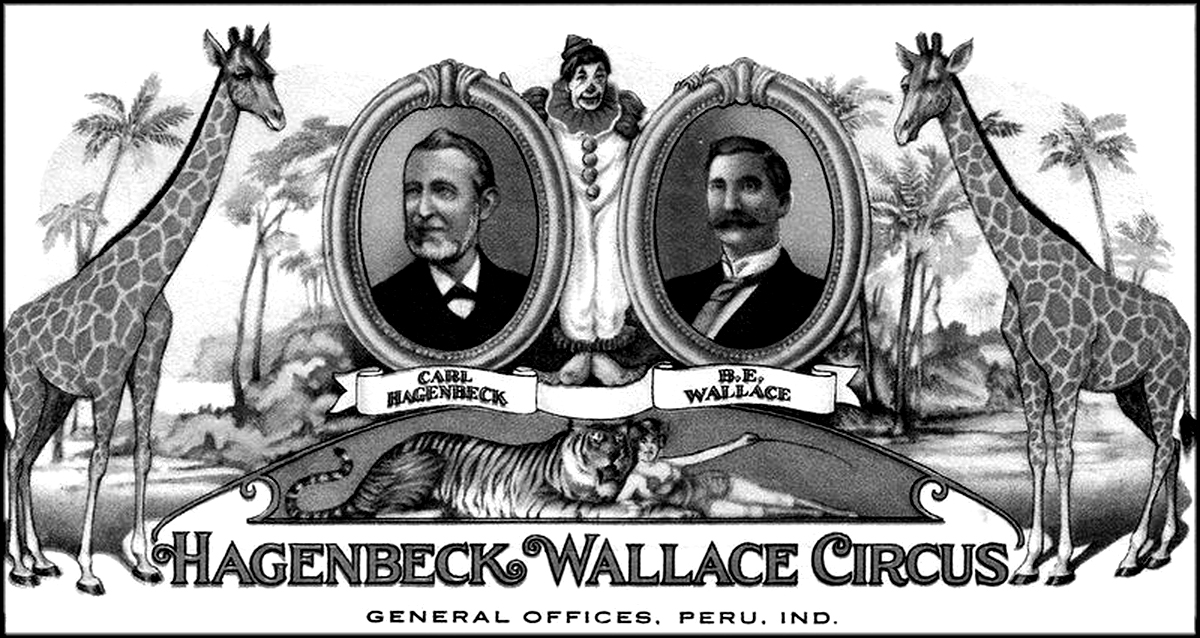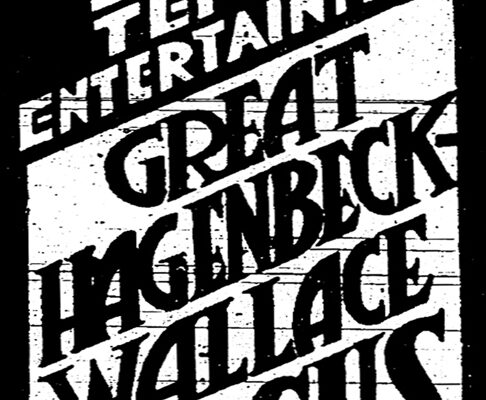In September 1922, exciting news went out in the Johnson City Daily News that the Hagenbeck-Wallace Circus was coming to Johnson City’s circus ground, the big rectangular lot located between E. Main and E. Market streets where the city municipal building is now located. Seventeen tents of various sizes were erected for the “amusement of the public and convenience of the employees.”

The circus was advertised as having the “longest and most magnificent parade in amusement history shown free upon the streets.” Mr. Hagenbeck was known as “Animal King” while his business partner, Mr. Wallace, was dubbed “Circus King.” The circus became famous for its beautiful thoroughbred horses with hundreds of highly trained, blue-blooded equines.
At 9:30 a.m. on a Friday, a bugle was sounded to begin assembling the parade. The newspaper writer was amazed that with so much hustle and bustle everything was orderly with absolutely no confusion. Every worker in the vast circus machine knew what had to be done and when it was needed. Everything was there including the gorgeously clad feminine outriders, the wonderful band wagons ablaze with scarlet, gold, green and silver colors, and numerous ridiculously clad clowns in their donkey carts “fussing” with the many youngsters that surrounded them. Several highly decorated cages of animals had the sides partially removed to give the audience glimpses of the little furry creatures moving restlessly inside. This was a carefully designed ploy to arouse the curiosity of the crowd and make them want to inspect the contents of the other cages.

The elephants, positioned in their proper places, marched along with majestic stride and ponderous poise. This was in contrast to the frightened horses by their sides and the ambling camels that lagged behind them. Sitting on the numerous wagons and chariots in the parade were performers who were decked out in their brightly colored regalia somewhat oblivious to the horde of spectators.
The spotted gray horses that were drawing the wagons pranced along proudly seemingly conscious of their shining leather and gleaming brass and gold. Four bands were evenly positioned in the parade so as to produce a continuous fanfare from appreciative bystanders. Some folks were seen rubbing tears from their eyes because the spectacle was “reminiscent of the good old days.”
Next came an array of trained wild cats, upon which the fame of the show was founded; striking equestriennes in arrogant raiment; and breathtaking acrobatic groups tumbling like a cascade. At the circus grounds, numerous aerial stars kept the lofty canvas dome alive with activity along with a corps of clowns whose sole mission was to keep the crowd in stitches.
Among the many circus celebrities in the show that year were the Davenport Troupe of equestriennes; the John Helliott wild animal acts; and the Wallace troupe of performing horses, one of which was Porter, the world’s highest jumping horse and Maid of the Mist, a riderless horse that jumped for the fun of it. Others were Mesdames Alma Wood and Marion Drew, presenting a herd of trained elephants; the Stokes and Brock troupe of aerialists; the two flexible Nicholsins; and the Riding Crandals consisting of 60 Japanese jugglers and a Chinese troupe of acrobats.
And estimated crowd of 5,000 persons was in attendance at the 2:00 p.m. performance; the night show started at 8:00 p.m. The doors were open an hour before and after each show to allow attendees to leisurely tour the menagerie.
The organization was formed in 1907 when Ben Wallace purchased the Carl Hagenbeck Circus and merged it with his show to form the Hagenbeck-Wallace Circus. Things went well until the Great Depression caused the circus to suffer financially, forcing it to close its doors in 1938.
